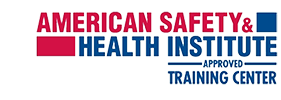
Teens and adolescents between the age of 13 and 18 are often forgotten when it comes to their first aid and CPR needs and are typically lumped in with adults. The injuries that affect teens the most are often not the same ones that affect infants – after all, a child who is 14 isn’t going to be a victim of SIDS or is at a high risk of choking. Plus, pediatric CPR and first aid training for infants and children require different methods and protocols than teens. That all being said, when it comes to first aid, teenagers have unique needs and risk, and shouldn’t just be compared to adults. That’s why we wanted to take an opportunity, as part of our series on CPR and first aid tips for children and infants, to discuss risk factors and treatment for teenagers.
*Download our First Aid Tips handbook here
Common Causes of Injury in Adolescents
The leading causes of death in teens are accidents, homicide, suicide, cancer, and heart disease. Accidents account for 48 percent of those deaths, and focusing only on unintentional injury and accidents, the most common causes among young people ages 13 to 18 are:
- Motor vehicle accidents (73 percent)
- Drowning (5 percent)
- Unintentional poisoning, including drug overdose (10 percent)
- Land transport accident, such as four-wheelers (3 percent)
The first thing is reducing risk for these accidents.
Car Accidents
- Parents setting good examples – not speeding, paying attention, not using a phone;
- Wearing a seat belt at all times;
- Eliminating distractions, including cell phones, while driving. Teach teens to keep their phones in the glove box or in the backseat while they drive;
- Taking a professional driving class;
- Continue to drive with newly licensed teens to help them improve their skills;
- Understanding the dangers of drinking and driving and being in a car with someone who has been drinking;
- Younger teens who are under 100 pounds are often safer in the backseat;
Poisoning and Overdoses
- Keep prescription medications and alcohol locked away;
- Dispose of any unused prescriptions;
- Have open discussions with teens about prescription drugs, illegal drugs, and their dangers;
- Have carbon monoxide detectors placed in the home;
Drowning
- Never swim alone;
- Stay sober on and in the water;
- Wear life jackets when boating, kayaking, or other water activity;
- Take swimming lessons for a refresher course;
- Consider taking a lifeguard instruction course;
ATV Accidents
- Wear a helmet and protective gear;
- Don’t drive with a passenger or as a passenger;
- Children under 16 shouldn’t operate ATVs nor ride as a passenger;
Administering CPR and First Aid to Teenagers
CPR and first aid for teenagers follows the same rules and guidelines as it does for adults. If a teenager has collapsed or is unconscious, follow these steps for CPR:
- Tap or gently shake the victim and ask loudly, “Are you OK?”
- Call 911 immediately if you’re alone, or have someone else call for help;
- If the victim isn’t breathing, begin chest compressions with the heel of your hand in the center of the chest with the other hand on top;
- Press straight down two inches deep at a rate of 100 compressions a minute (to the beat of “Stayin’ Alive” by the BeeGees);
- Open the airway by gently lifting the chin, pinching the nostrils closed, and giving two rescue breaths of one second each;
- Continue until medical help arrives or it becomes unsafe to continue.
First aid tips for common injuries teens experience include:
- Stopping bleeding by placing a clean cloth, gauze, or towel onto the injury and applying consistent pressure;
- Staying with them until help arrives, talking to them, and keeping them calm;
- Keep injuries to bones stable and immobilized;
Enrolling in a CPR and First Aid Class with Your Teen
Often, when a teenager is injured, an adult may not be there, so it’s important that they learn how to administer CPR and first aid. Consider taking a class with your teenager so you can both get your CPR certification or talk to your local schools about offering on-site CPR training. The more people who have these life saving skills, the more likely you are to see positive outcomes from injury.
Schedule Your CPR Class in Raleigh Today
At CPR Educators, we are dedicated to teaching lifesaving skills to young adults and adults. In addition to offering classes at our Raleigh training center, our instructors also provide on-site training to schools, organizations, and businesses. To learn more, call us at (919) 639-4848 or fill out the contact form below to get started.



